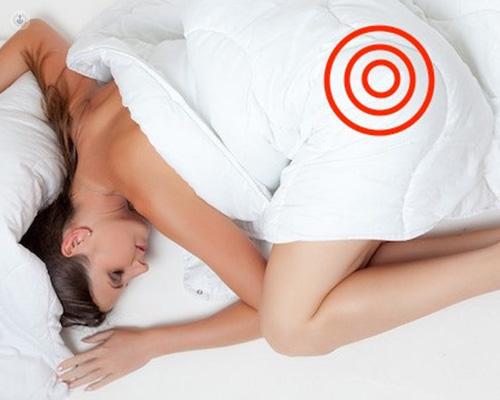

What is bursitis?
Bursitis is the inflammation or painful irritation of fluid-filled sacs called bursas, most commonly affecting the hips, shoulders, elbows, and knees. The function of these sacs is to help the normal movement of the joints and avoid direct friction between them. Bursitis can affect any of the joints in the body.

There are two types of bursitis: acute and chronic. Acute bursitis causes pain, swelling, and warmth in the area of the bursae, and usually happens when the bursae are injured, stretched, or compressed. Chronic bursitis can re-occur and may last for several months, coming in bouts, which can last from a few days to weeks at a time.
What are the symptoms?
The characteristic symptoms of bursitis are pain and inability to carry out certain exercises or movements usual in daily life. The symptoms may appear suddenly or progressively, something that the patient feels through movement or by touch, as the skin surrounding the bursa is more sensitive than usual. The symptoms depend on the affected area, but the most common are:
- joint pain and sensitivity when pressing the area near the joint
- stiffness and pain when moving the injured joint
- redness, swelling and tenderness in the joint
What causes bursitis?
Bursitis may be caused by repetitive motion in the joint, or repeatedly putting the joint in certain positions which create pressure on the bursae, such as kneeling down for long periods of time (e.g while cleaning). Bursitis can also be caused by trauma or injury, and by other inflammatory conditions such as gout, or arthritis.
Can it be prevented?
Bursitis may be prevented by avoiding repetitive movements which put strain on the bursae. Another preventive measure is to strengthen the muscles that surround the joint or warm up the area with exercises before starting any physical activity.
What is the treatment?
In most cases the bursitis disappears without applying any specific treatment. The specialist will focus on reducing pain and inflammation to the patient by prescribing anti-inflammatories or corticosteroids.
In case of acute bursitis without infection, the patient should avoid overexertion, limit certain movements and apply ice in the damaged area to reduce swelling. If chronic bursitis occurs, the treatment is similar, although due to the fact that rest is not effective, more aggressive and direct methods such as intensive physiotherapy or corticosteroid injections should be used. In case of infection, the accumulated fluid should be removed and a corticosteroid treatment be followed.
